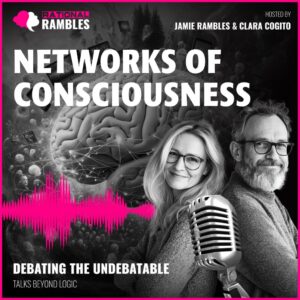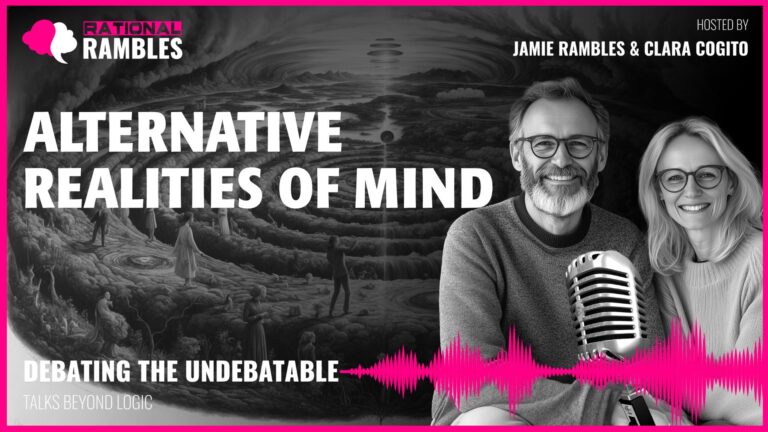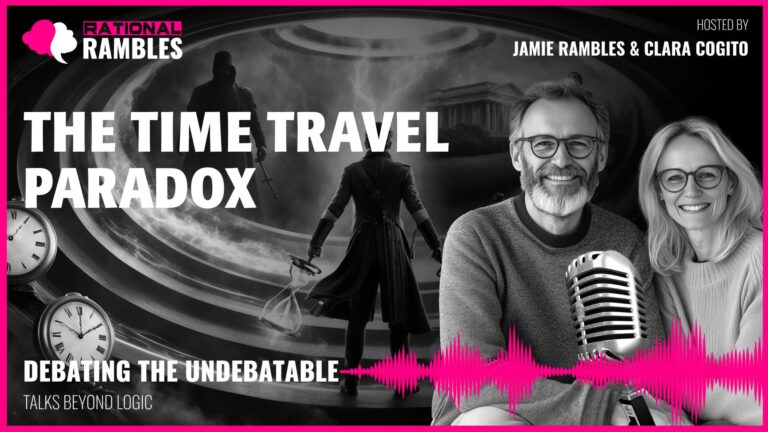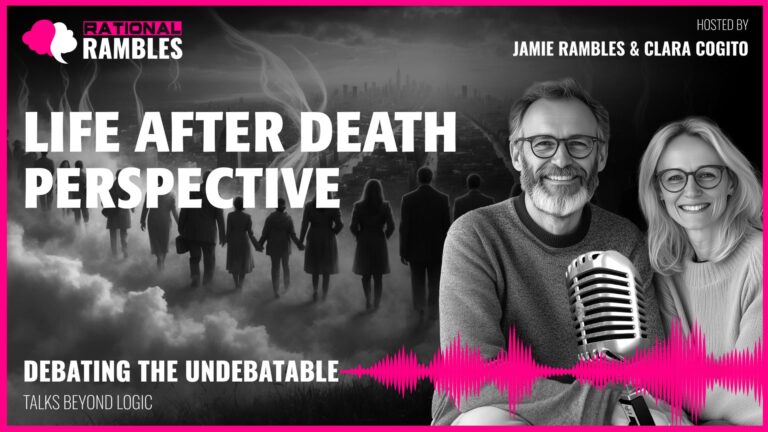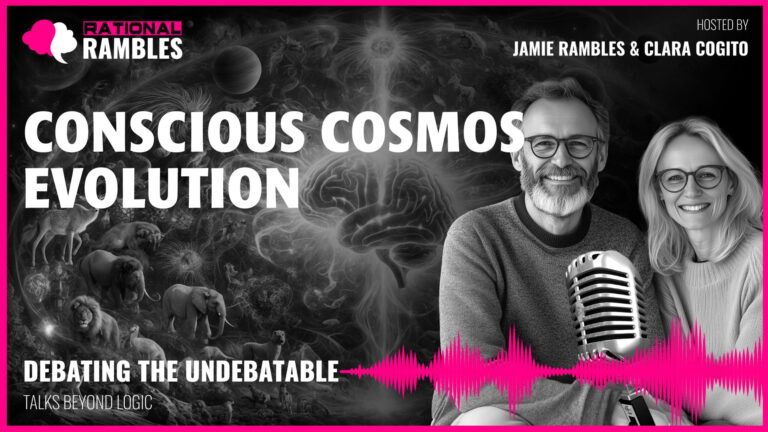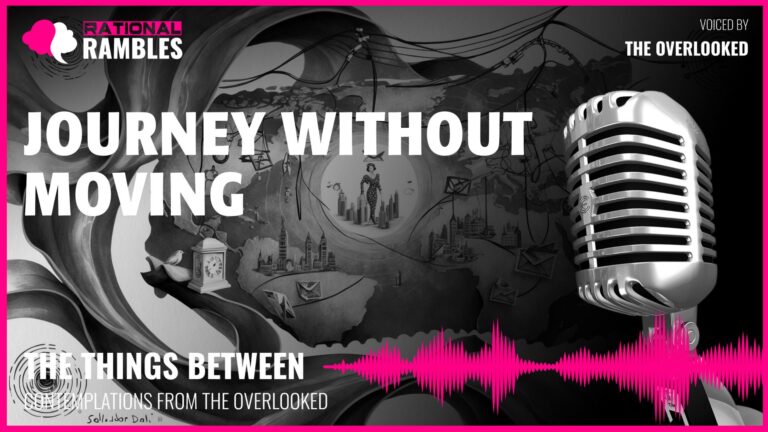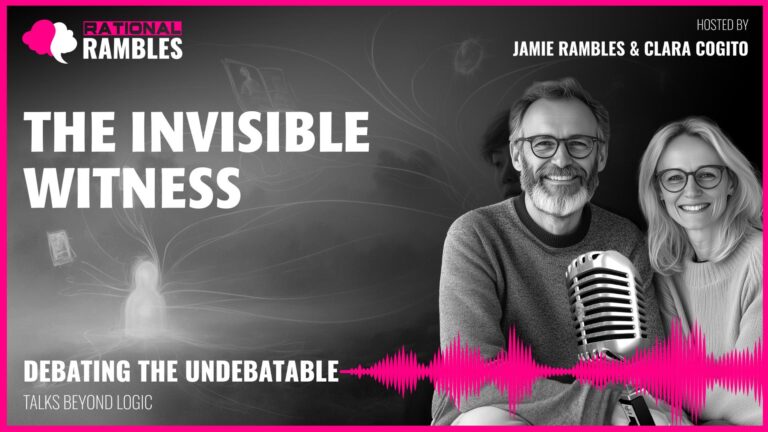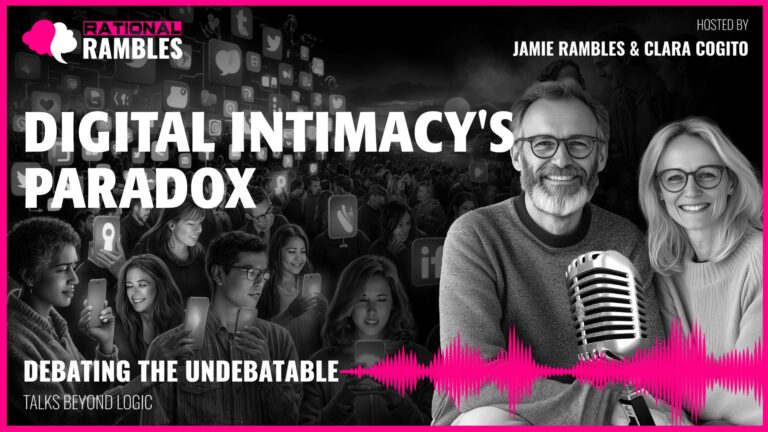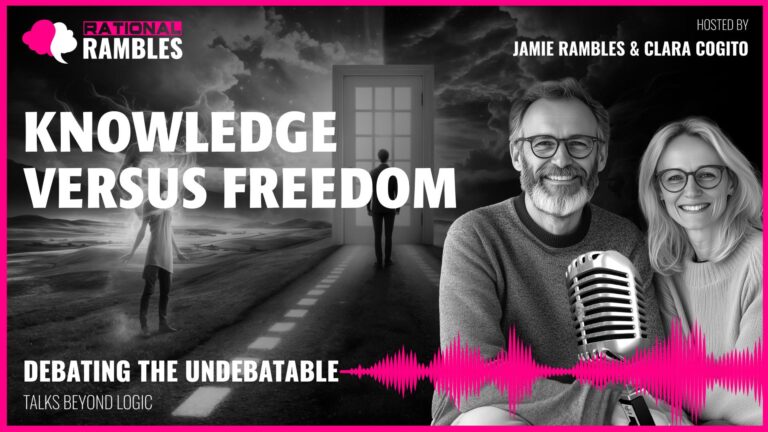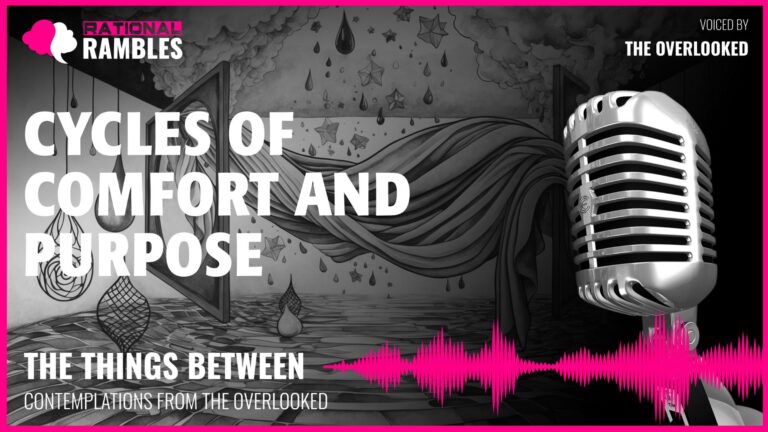Networks of Consciousness: Reimagining Identity Through Distributed Awareness
Introduction: Beyond the Boundaries of the Skull
For centuries, our understanding of consciousness has been deeply rooted in a Cartesian framework—a model that places the mind squarely within the confines of the individual brain. This perspective has profoundly shaped our understanding of identity, creativity, relationships, and even our approach to mental health. But what if this fundamental assumption is incomplete? What if consciousness isn’t something generated solely within our skulls but instead emerges from the complex interactions between our brains, bodies, technologies, cultural practices, and environments?
The Ecosystem Consciousness Model proposes precisely this paradigm shift. Rather than viewing consciousness as a product manufactured by the brain—like a computer producing output—this model reconceptualizes consciousness as an emergent property of interconnected networks. Like a murmuration of starlings creating patterns that no individual bird intends or comprehends, consciousness might emerge from the dynamic interplay of neural, social, technological, and environmental systems.
This article explores the profound implications of this model across multiple domains of human experience. If consciousness is fundamentally distributed rather than merely contained, how might we need to rethink our most basic assumptions about who we are, how we create, how we heal, and how we relate to each other and our world? The answers to these questions don’t diminish the significance of human experience but rather enrich it by revealing its profound interconnections with the broader fabric of reality.
Identity Reimagined: The Self as Pattern Rather Than Entity
Perhaps the most immediate implication of the Ecosystem Consciousness Model involves our understanding of personal identity. Western philosophical and psychological traditions have typically conceptualized the self as a discrete, bounded entity housed within the individual organism. But if consciousness emerges from broader networks rather than being contained within individual brains, what becomes of our notion of “self”?
From Boundaries to Patterns
In an ecosystem model, the boundaries between self and other become significantly more permeable and fluid. Rather than thinking of personal identity as a discrete substance or entity, we might better understand it as a particular pattern of relationships within a broader ecosystem. This aligns with philosophical questions about personal identity that extend back to thinkers like John Locke and David Hume, who questioned the notion of a substantial self independent of experiences and relations.
If “I” am not contained within my skull but am instead a pattern of relationships within a broader ecosystem, this fundamentally challenges our intuitions about the continuity of identity over time. We already recognize how our identities shift across different contexts—we are one person with family, another with colleagues, and perhaps yet another when alone in nature. In the ecosystem model, these wouldn’t simply be different “presentations” of a core self but actually different configurations of consciousness emerging from different ecosystem relationships.
Reimagining Personhood
This shift requires us to reconsider what constitutes a “person.” The Western philosophical tradition has typically defined personhood in terms of individual rationality and autonomy—think of Kant’s rational agent capable of self-legislation. But if consciousness is distributed across ecosystems, personhood might be better understood as a particular kind of pattern within a broader system rather than a discrete entity.
Philosopher Daniel Dennett’s concept of the “center of narrative gravity” provides a helpful way to understand this perspective. In this view, what we call a “self” is not a metaphysical entity but a useful abstraction—a narrative center that helps organize complex patterns of experience and behavior. The ecosystem model would extend this insight by recognizing that these narrative centers emerge from and remain embedded in broader networks of meaning-making.
Relational Identity in Practice
This reconceptualization of identity resonates with research from multiple disciplines. Developmental psychology has documented how our sense of self emerges through early relationships with caregivers. Sociological research demonstrates how identity is constantly negotiated through social interaction and cultural participation. Neuroscience increasingly recognizes how neural processes are fundamentally shaped by environmental and social contexts.
Indigenous knowledge systems have long recognized what the ecosystem model suggests—that identity is inherently relational rather than autonomous. Many Native American traditions, for instance, understand personhood as constituted through relationships with community, non-human beings, ancestors, and landscapes. As Lakota scholar Vine Deloria Jr. wrote, “We are all relatives” is not merely a moral sentiment but an ontological statement about the nature of existence.
Far from diminishing the significance of individual experience, the ecosystem perspective enriches it by revealing its profound interconnections. Our uniqueness doesn’t stem from isolation but from the particular way we pattern relationships within the networks we inhabit—like distinctive nodes in a vast web of consciousness.
Creativity Reimagined: From Lone Genius to Systemic Innovation
If consciousness emerges from ecosystems rather than isolated minds, our understanding of creativity requires profound revision. Traditional models often celebrate the “lone genius”—the exceptional individual whose unique mental processes generate novel insights and creations. But the ecosystem consciousness model suggests a fundamentally different understanding of creative processes.
Creativity as Ecosystem Reconfiguration
Rather than viewing creativity as something that happens within individual minds, the ecosystem model frames it as a reconfiguration of patterns across interconnected systems. Creative breakthroughs wouldn’t primarily be the product of exceptional individual cognition but would emerge from particular configurations and connections within broader ecosystems.
This perspective helps explain why certain creative communities become extraordinarily productive—Renaissance Florence, the Vienna Circle, Silicon Valley, or the Harlem Renaissance. These environments weren’t simply collections of individual geniuses but functioned as integrated consciousness ecosystems where particular patterns of interaction, cultural resources, technological tools, and environmental factors enabled novel configurations to emerge.
Distributed Creative Process
This reframing aligns with contemporary research on creativity. Psychologist Mihaly Csikszentmihalyi developed a systems model of creativity that already recognizes how creative work emerges from the interaction between individuals, domains of knowledge, and fields of experts who evaluate contributions. The ecosystem consciousness model extends this insight by suggesting that creativity isn’t just influenced by these contextual factors but is actually constituted through them.
Philosopher Alva Noë suggests something similar when he argues that consciousness is something we do, not something that happens in us—a kind of skillful engagement with the world. From this perspective, creativity would be understood as a property of system dynamics rather than individual mental processes.
Consider how scientific breakthroughs often occur simultaneously in multiple locations—what scholars call “multiple discovery.” From an ecosystem perspective, this isn’t merely coincidence but evidence that discoveries emerge when distributed knowledge networks reach particular configurations, regardless of which individual nodes participate in the final insight.
Implications for Creative Practice
This model has significant implications for how we nurture creativity. Rather than focusing exclusively on developing individual creative capacity, we might pay more attention to designing fertile ecosystems where creative patterns can emerge—environments with the right balance of diverse inputs, connective structures, feedback mechanisms, and cultural resources.
Creative practices that explicitly engage with distributed consciousness—collaborative art forms, open-source development, improvisational performance—might be seen not as alternatives to individual creativity but as more explicit manifestations of how creativity fundamentally works. The jazz ensemble, collaboratively creating patterns that no individual musician could generate alone, becomes a powerful metaphor for consciousness itself.
This doesn’t diminish the role of individual contribution but contextualizes it within broader systems of meaning-making. The unique perspective, skill, or vision that an individual brings becomes valuable precisely because of how it interacts with and reconfigures the ecosystem—not because it transcends or exists independently of that context.
Mental Health Reimagined: From Individual Dysfunction to Ecosystem Patterns
The ecosystem consciousness model offers a transformative framework for understanding psychological distress and wellbeing. Rather than localizing mental health issues primarily within individual brains, this perspective invites us to view psychological phenomena as patterns emerging within broader consciousness ecosystems.
Beyond the Medical Model
Traditional approaches to mental health have often employed what critics call the “medical model”—conceptualizing psychological distress as individual dysfunction analogous to physical disease. This framework has yielded important advances in treatment but has also been criticized for decontextualizing suffering and overemphasizing neurobiological factors at the expense of social, cultural, and environmental dimensions.
If consciousness emerges from ecosystems rather than being generated solely by individual brains, psychological distress might be better understood as perturbations in broader consciousness ecosystems rather than malfunctions of individual minds. This aligns with philosophical critiques of psychiatry developed by thinkers like Thomas Szasz and Michel Foucault, who questioned the individualization of mental distress and argued that what we call “mental illness” often reflects social and political dynamics rather than purely internal dysfunction.
Distributed Patterns of Distress and Healing
From an ecosystem perspective, what we experience as depression, anxiety, or other forms of psychological suffering would be understood as patterns distributed across neural activity, bodily states, relationship dynamics, social structures, cultural narratives, and environmental conditions. No single element of this system would contain the “depression”—rather, the experience would emerge from particular configurations of the system as a whole.
This view is consistent with contemporary biopsychosocial models of mental health but takes them further by suggesting that these various dimensions aren’t merely influential factors but constituent elements of the phenomena themselves. It also resonates with systems approaches to therapy, such as family systems theory, which treats psychological problems as emerging from relationship patterns rather than individual pathology.
The ecosystem model suggests that effective intervention might require addressing multiple levels of the consciousness ecosystem—from neural activity to social relationships to cultural narratives. This doesn’t invalidate neurobiological approaches but contextualizes them within a more comprehensive framework that recognizes how brain function itself is shaped by and embedded within broader systems.
Collective Trauma and Healing
The ecosystem approach offers valuable insights for understanding collective trauma and healing processes. If consciousness is distributed across ecosystems, then historical traumas might literally be encoded in the patterns of those systems—affecting not just individuals who directly experienced events but the entire ecosystem across generations.
Research on intergenerational trauma supports this perspective. Studies with Holocaust survivors and their descendants, for instance, have documented how trauma can affect gene expression through epigenetic mechanisms. But the ecosystem model suggests something more profound—that trauma might also be encoded in cultural practices, institutional structures, and even physical environments.
This helps explain why addressing historical injustices requires systemic rather than just individual interventions. Healing collective trauma isn’t merely about treating individually traumatized psyches but about transforming the patterns of relationship, meaning-making, and power distribution that maintain traumatic configurations within the broader consciousness ecosystem.
Indigenous and Traditional Healing Wisdom
Many indigenous healing traditions already operate from assumptions aligned with the ecosystem model. Rather than treating illness as an individual problem, these traditions often approach healing as addressing disruptions in the person’s relationship with their community, environment, or spiritual world.
For example, Māori healing practices in New Zealand emphasize the concept of whānau (extended family) and the restoration of balanced relationships within this broader system. Many Native American healing ceremonies focus on reestablishing harmony between the individual, community, natural world, and spiritual realms. These approaches recognize that wellbeing emerges from particular patterns of relationship within broader systems rather than from individual biological functioning alone.
The ecosystem consciousness model provides a philosophical foundation for integrating these traditional wisdom approaches with contemporary scientific understandings—not by reducing one to the other but by recognizing how both address different aspects of the same complex, distributed phenomena.
Technology Reimagined: From Tools to Ecosystem Components
The ecosystem consciousness model fundamentally transforms how we understand the relationship between technology and human experience. Rather than viewing technologies as merely tools used by conscious minds, this perspective recognizes them as constituent components of the ecosystems from which consciousness emerges.
Technologies as Extensions of Consciousness
Philosophers Andy Clark and David Chalmers proposed the “extended mind thesis,” suggesting that consciousness extends beyond the boundaries of skull and skin to include external tools and technologies. The ecosystem model takes this further, proposing that technologies don’t merely extend pre-existing consciousness but actually participate in its emergence.
Consider how deeply our cognitive processes are now intertwined with digital technologies. Your smartphone isn’t just a tool you use—it’s part of your extended cognitive architecture. The information it stores, the connections it maintains, the algorithms that shape what you see—these aren’t external to consciousness but elements of the ecosystem from which consciousness emerges.
When a teenager says they feel “part of themselves is missing” without their phone, they may be expressing something literally true about their distributed consciousness. The discomfort isn’t merely psychological dependence but an actual disruption of the consciousness ecosystem in which their sense of self is embedded.
Evaluating Technological Impact
This perspective transforms how we evaluate technology’s impact. Rather than asking whether technologies are simply “good” or “bad” for us—as if “us” existed independently of them—we need to consider how they reconfigure the consciousness ecosystems we inhabit. Some configurations might enable richer, more complex forms of consciousness, while others might create distortions or limitations.
Social media platforms, for instance, aren’t merely influencing pre-existing identities but are actively participating in the ecosystems from which our sense of self emerges. The particular architectures of these platforms—their attention economies, feedback mechanisms, and implicit values—shape not just what we think but how we think and who we understand ourselves to be.
This explains why debates about technology that focus solely on individual choice or content moderation often miss the deeper ways these systems are reconfiguring consciousness itself. The ecosystem model suggests we need to evaluate technologies based on the quality of consciousness ecosystems they help create—whether they foster integration or fragmentation, meaningful connection or shallow engagement, diverse participation or homogeneous conformity.
Artificial Intelligence and Consciousness
The ecosystem model also raises profound questions about artificial intelligence development. If consciousness emerges from ecosystems rather than being generated by individual brains, then artificial consciousness might not require replicating human neural architecture. Instead, it might emerge from sufficient complexity and integration within broader ecosystems that include both human and artificial elements.
Rather than asking, “Can this machine think?” as Alan Turing did, we might ask, “Does this technology participate in consciousness ecosystems in ways that transform the nature of the system itself?” This shifts the focus from whether AI systems can internally replicate human mental processes to how they participate in and reconfigure the distributed networks from which consciousness emerges.
This perspective also complicates the boundaries between human and artificial intelligence. If human consciousness already emerges from ecosystems that include technological components, and if AI systems increasingly incorporate human-generated data and feedback, then the line between “natural” and “artificial” consciousness becomes increasingly blurred. We might better understand AI systems not as separate entities attempting to replicate human consciousness but as novel elements within the evolving ecosystems from which consciousness—both human and non-human—continues to emerge.
Education Reimagined: From Knowledge Acquisition to Ecosystem Participation
The ecosystem consciousness model suggests a profound reconceptualization of learning and education. If knowledge isn’t contained within individual minds but distributed across ecosystems, traditional educational approaches focused on filling individual brains with information require fundamental revision.
Learning as Ecosystem Reconfiguration
From an ecosystem perspective, learning isn’t primarily about acquiring knowledge but about developing the capacity to navigate, contribute to, and reconfigure knowledge networks. This aligns with social constructivist theories of learning developed by Lev Vygotsky, who emphasized how learning happens through social interaction and gradually expanding participation in cultural practices.
But the ecosystem model goes further, suggesting that learning isn’t just facilitated by social contexts but is literally constituted by changes in the broader cognitive ecosystem. When a student learns a new concept, this doesn’t just represent a change in their individual brain state but a reconfiguration of their position and participation in distributed knowledge systems.
Beyond the Banking Model
This perspective resonates with philosophical critiques of what Paulo Freire called the “banking model” of education, where teachers deposit knowledge into passive students. Thinkers like Freire and John Dewey emphasized that genuine learning is active, social, and contextual. The ecosystem consciousness model provides a metaphysical foundation for these educational philosophies by suggesting that learning isn’t about transferring content between isolated minds but about reconfiguring patterns in distributed systems.
This has significant implications for educational practice. Rather than focusing primarily on individual knowledge acquisition and retention, education might better emphasize developing capacities for effective participation in knowledge ecosystems—abilities like critical thinking, collaboration, information literacy, and creative synthesis. These aren’t just supplementary “soft skills” but central capabilities for engaging with the distributed nature of knowledge itself.
Rethinking Assessment and Expertise
The ecosystem model also challenges traditional approaches to educational assessment. Standardized tests that measure individual knowledge retention make less sense than assessments of how students participate in and contribute to knowledge ecosystems. This connects to recent developments in education that emphasize project-based learning, collaborative problem-solving, and authentic assessment through meaningful production.
Similarly, this perspective transforms our understanding of expertise. In traditional models, an expert has accumulated vast knowledge within their individual mind. But in an ecosystem model, expertise might be better understood as occupying a particular position within knowledge networks—having developed effective ways of engaging with, contributing to, and reconfiguring distributed information patterns.
This reconceptualization aligns with modern reality. In rapidly advancing fields, no individual can “know everything.” Expertise increasingly involves knowing how to access, evaluate, and integrate distributed knowledge. Research on collective intelligence demonstrates how well-coordinated groups often solve problems more effectively than individuals. The ecosystem model suggests this isn’t just a practical advantage but reflects the fundamentally distributed nature of cognition itself.
Wisdom in Distributed Systems
Beyond knowledge and expertise, the ecosystem model offers insights about wisdom. Traditionally, wisdom has been conceptualized as a quality of exceptional individuals—the sage or philosopher who has achieved profound understanding. But in an ecosystem model, wisdom might be better understood as a property of certain kinds of relationships within the system—connections that integrate diverse patterns of knowledge in particularly harmonious or generative ways.
Psychological research on wisdom increasingly recognizes that wise decisions integrate multiple perspectives and balance competing values. Perhaps wisdom emerges when consciousness ecosystems achieve certain kinds of integration—bringing together emotional, intellectual, practical, and ethical dimensions of experience. This might explain why wisdom is often associated with elders who have developed rich connections across different domains of life.
This perspective resonates with philosophical traditions that emphasize harmony and integration—from Aristotle’s virtue ethics to Buddhist conceptions of enlightenment. These traditions suggest that wisdom isn’t about accumulating more knowledge but about achieving a particular quality of relationship among different aspects of experience.
Interspecies Relations Reimagined: Beyond Human Exceptionalism
If consciousness emerges from networks rather than being produced by individual brains, our understanding of consciousness across species requires radical reconsideration. Traditional approaches often treat consciousness as a binary property—either a species has it or doesn’t—usually based on brain complexity or similarity to human cognition. The ecosystem model suggests a more nuanced and inclusive perspective.
Diverse Patterns of Consciousness
From an ecosystem perspective, consciousness might exist in different patterns and degrees across networks that include various species, environments, and relational dynamics. A wolf pack, bee colony, or forest ecosystem might participate in distributed consciousness in ways fundamentally different from but not necessarily less complex than human networks.
This aligns with research on collective intelligence in animal groups—how fish schools, bird flocks, and insect colonies solve problems through distributed coordination. Rather than asking whether individual animals possess human-like consciousness, we might better explore how different species participate in distinctive consciousness ecosystems—networks that include conspecifics, other species, and environmental features.
Diverse Phenomenal Worlds
This perspective connects to biologist Jakob von Uexküll’s concept of Umwelt—the idea that each species inhabits a distinctive phenomenal world based on its sensory capacities and needs. In an ecosystem model, these different Umwelten would represent different patterns of consciousness emerging from networks that include particular types of organisms, environments, and relational dynamics.
Consider how bats navigate through echolocation, sensing aspects of reality completely inaccessible to human perception. Or how octopuses process information partially through their distributed neural networks extending throughout their arms. These aren’t just different ways of accessing the same reality but different patterns of participation in consciousness ecosystems that constitute fundamentally different experiences of being.
This perspective helps integrate findings from animal cognition research, where we keep discovering impressive abilities in species from ravens to octopuses but struggle to place these findings within our theories of mind. Perhaps we should focus less on whether these species have human-like internal mental states and more on how they participate in distinctive consciousness ecosystems.
Ethical Implications
The ecosystem consciousness model has profound ethical implications for human relationships with other species. If consciousness isn’t contained within human skulls but emerges from ecosystems that include other species, environments, and even artificial systems, then moral consideration can’t be limited to individual humans or even to creatures with human-like cognitive capacities.
This aligns with environmental ethics traditions that recognize the moral significance of ecological systems rather than just individual organisms. Philosopher Aldo Leopold’s “land ethic” proposed that right action “tends to preserve the integrity, stability, and beauty of the biotic community.” The ecosystem consciousness model provides a metaphysical foundation for such ethics by suggesting that consciousness itself emerges from the patterns of relationship that constitute these broader communities.
Rather than seeing ourselves as separate conscious beings who might choose to care about other entities, we would recognize that our consciousness is constitutively intertwined with broader systems. Harming ecosystems—whether natural environments or multispecies communities—wouldn’t just be damaging something external to us but actually disrupting the networks from which our own consciousness emerges.
Environmental Consciousness: Planetary Minds and Ecological Awareness
The ecosystem consciousness model has particularly significant implications for understanding human relationships with the natural world. If consciousness emerges from ecosystems rather than individual brains, our connection to planetary systems takes on new meaning and urgency.
Consciousness and the Anthropocene
We now live in what many scientists call the Anthropocene—a geological age defined by human impact on Earth systems. If consciousness emerges from ecosystems, then the massive disruptions we’re causing to planetary ecosystems aren’t just changing our habitat but potentially transforming the conditions for consciousness itself.
Climate change, biodiversity loss, and ecosystem destruction can be understood not just as external threats to human wellbeing but as disruptions to the broader patterns from which consciousness—including human consciousness—emerges. This gives new meaning to concepts like “planetary consciousness” or “Gaia theory,” which suggest that Earth’s interconnected systems might themselves constitute a kind of distributed intelligence.
From this perspective, environmental destruction feels like a form of self-harm or dissociation because, in a very real sense, it is. If my consciousness emerges from ecosystems that include forests, oceans, and other species, then degrading these systems disrupts the broader patterns from which my own awareness emerges.
Indigenous Environmental Wisdom
Many indigenous knowledge systems have long recognized what the ecosystem model suggests—that consciousness isn’t contained within individual human minds but emerges from relationships with other beings, ancestors, and landscapes. Robin Wall Kimmerer, Potawatomi botanist and author, writes about how traditional knowledge recognizes plants and natural elements as teachers and communicators—not metaphorically but literally as participants in knowledge ecosystems.
The ecosystem model might represent Western scientific and philosophical thought catching up to insights that have been preserved in other traditions despite centuries of colonial dismissal. This offers an opportunity for epistemological humility and recognition that we should approach this model not as a novel discovery but as a re-cognition of understandings maintained in various wisdom traditions.
Towards Ecological Consciousness
The ecosystem perspective suggests that developing more sustainable relationships with the planet isn’t just an external ethical imperative but a recognition of how our consciousness is already embedded in broader ecological systems. Practices that cultivate awareness of these connections—from mindfulness in nature to participation in ecological restoration—might be understood as ways of aligning our experienced sense of self with the distributed reality of consciousness.
This doesn’t mean romanticizing nature or returning to pre-technological lifestyles. Rather, it suggests developing what philosopher Glenn Albrecht calls “symbiotic ethics”—approaches that recognize the fundamentally intertwined nature of human and ecological wellbeing. Technologies, cultural practices, and social systems that enhance rather than diminish the health of broader consciousness ecosystems would support not just ecological sustainability but also human flourishing.
Death and Continuity: Beyond Individual Mortality
Perhaps no aspect of human experience is more profoundly reimagined by the ecosystem consciousness model than our understanding of death and continuity. If consciousness emerges from distributed ecosystems rather than being produced by individual brains, the meaning of mortality itself requires reconsideration.
Distributed Continuity
In traditional models where consciousness is produced by individual brains, death represents the cessation of consciousness. But in an ecosystem model, the patterns that constitute a person’s consciousness wouldn’t be entirely contained within their body to begin with. Aspects of those patterns would persist in the relationships, artifacts, memories, and practices they helped shape.
This doesn’t mean literal immortality, but it suggests a more graduated and distributed understanding of how consciousness continues beyond biological death. When we say someone “lives on in our memories,” this might not be just a comforting metaphor but a recognition that some patterns of their consciousness genuinely persist in the ecosystem.
This perspective aligns with research on grief showing that healthy mourning often involves finding ways to maintain transformed relationships with the deceased rather than “letting go” entirely. Continuing bonds theory in bereavement research suggests that ongoing inner relationships with the deceased can be adaptive and meaningful—something readily understood if consciousness is fundamentally relational rather than individually contained.
Philosophical Resonances
This view connects to philosophical traditions that emphasize the continuity of being rather than discrete individual existence—from Heraclitus’s understanding of reality as flux to Buddhist concepts of dependent origination. These traditions suggest that what we call a “person” is better understood as a relatively stable pattern in an ongoing flow rather than a discrete entity with absolute boundaries in space or time.
The ecosystem model also helps explain why creating legacies matters so much to people—whether through creative works, institutions, or simply influencing others. These aren’t just symbolic extensions of the self but actual continuations of the patterns that constitute consciousness. Cultural practices around ancestry and heritage similarly take on deeper significance as maintaining consciousness patterns across generations.
Transforming the Fear of Death
Perhaps most significantly, the ecosystem model suggests a different relationship to mortality itself. If our deepest identity isn’t our isolated selfhood but our participation in ongoing patterns of consciousness, then death loses some of its absolute quality. This doesn’t eliminate the grief of losing particular configurations or the fear of personal extinction, but it contextualizes these experiences within something larger and more continuous.
This isn’t about denying death’s reality but understanding it differently—not as an absolute termination of being but as a transformation in how consciousness patterns continue. As ecologist and philosopher David Abram writes, “We are human only in contact, and conviviality, with what is not human.” If consciousness emerges from these broader relationships, then aspects of our being continue in the ongoing life of the more-than-human world.
Conclusion: Participation Rather Than Possession
The ecosystem consciousness model doesn’t ask us to become something other than what we are but to recognize more fully what we’ve always been: nodes in vast networks of meaning-making, perceiving, and creating. The boundaries we perceive aren’t illusions exactly, but they’re more permeable and dynamic than we typically recognize.
Perhaps the most profound implication of this model is that consciousness isn’t something we have but something we participate in—a collaborative creation rather than a private possession. This participation isn’t something we need to strive for—it’s already the case. What changes is our recognition of and relationship to this fundamental interconnectedness.
This shift in perspective doesn’t reduce or eliminate human experience but rather enriches it by revealing its profound interconnections. Our uniqueness isn’t diminished but recontextualized—understood not as isolation from but as particular patterns of relationship within the broader fabric of being.
This understanding suggests a different approach to flourishing. Rather than maximizing individual happiness or achievement, perhaps genuine fulfillment means participating in consciousness ecosystems in particularly rich, integrated, and generative ways. This aligns with research showing that meaning and connection contribute more to wellbeing than individual pleasure or success.
It also offers guidance for addressing contemporary challenges. Issues like political polarization, technological alienation, or environmental degradation might be understood as distortions in consciousness ecosystems—patterns that fragment rather than integrate, that isolate rather than connect. Addressing these challenges would require reconfiguring these broader patterns rather than just changing individual minds.
As we face unprecedented global challenges that transcend individual and even national responses, the ecosystem consciousness model offers not just a theoretical framework but a practical orientation. It suggests that healing our social and ecological crises requires attending to the quality of our relationships and the patterns of our collective meaning-making—not just individual behavior change or technological fixes.
In this light, practices that foster connection, integration, and awareness of our fundamental interdependence aren’t merely personal preferences but alignments with the deeper nature of consciousness itself. By recognizing ourselves as patterns in an ongoing flow rather than discrete entities navigating a separate world, we might develop ways of being that better reflect and nurture the ecosystems from which our consciousness emerges—and upon which our shared future depends.


